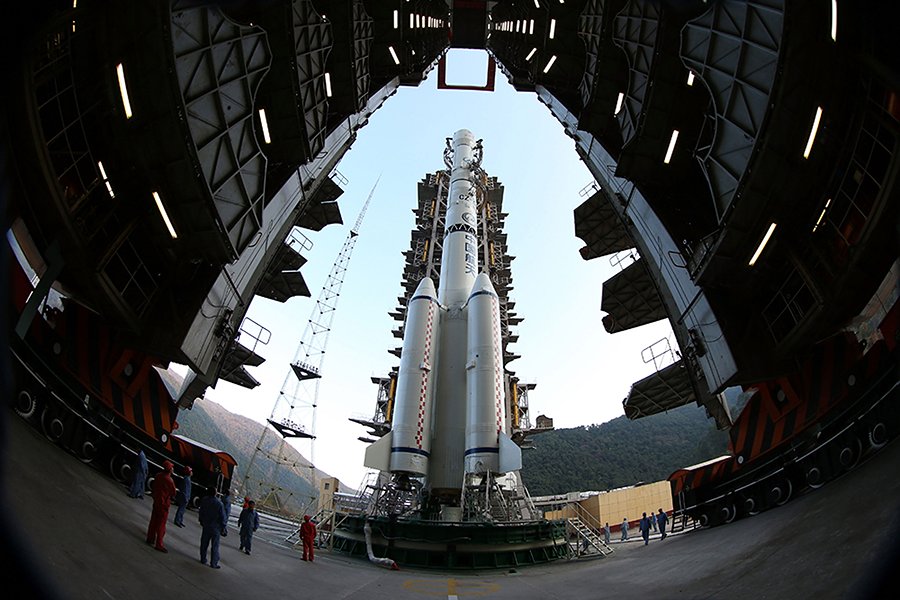Lunar ambitions: Why China wants to fetch rocks from the moon
Loading...
Late in 2013, China became the third nation to land a rover on the surface of the moon, following the United States and the former Soviet Union. By the end of 2017, China National Space Administration plans to send up a second mission and return with samples. And that is only the beginning of China's space aspirations.
In what was the first soft landing on the moon since the Soviet Luna 24 touched down on Aug. 22, 1976 (the last of 20 successful missions), China’s Chang’e 3 arrived in lunar orbit on Dec. 6, 2013 and landed on the surface days later.
The rover, called Yutu or Jade Rabbit (after a Chinese myth about a white rabbit that's a pet of the moon goddess Chang’e), experienced an array of technical difficulties soon after its landing. One such issue was an electrical shutdown following a cold lunar night, however, the challenges were addressed and the rover went on to become the longest operating moon rover ever, finally shutting down in August 2016 after 31 months.
Some of the photos from the Yutu rover were analyzed and discussed in a 2015 paper published in the scientific journal Nature Communications, which identified a new type of basalt found on the lunar surface that had note been previously examined.
Now China has announced intentions to return to the moon to gather rock samples by the end of this year, as a part of its developing space program.
The new lunar explorer, Chang’e 5, will be significantly more complicated than the previous Chang’e 3. “With a weight of 8.2 tons, the lunar probe is comprised of four parts: an orbiter, a returner, an ascender and a lander,” said China Aerospace Science and Technology Corp. consultant Ye Peijian, according to official state broadcaster CCTV.
If all goes according to plan, Chang’e 5’s lander probe will deposit rock samples in the ascending craft which will take the samples into the "orbiter" and the "returner," which in turn will separate as the returner re-enters the Earth's atmosphere.
“The mission will be China's first automated moon surface sampling, first moon take-off, first unmanned docking in a lunar orbit about 380,000 km [around 236,000 miles] from Earth, and first return flight in a speed close to second cosmic velocity,” said CCTV.
Though China was a late arrival to lunar explorations, it has since set a course to become a global force in space exploration, with plans to become the first nation to land a rover on the far side of the moon. China also has sights set further afield, with plans to land a rover on Mars by 2020.
The United States also has plans to send a rover to Mars in 2020. Though it will not be NASA's first, this new rover will be tasked with the first in the solar system task of collecting Martian rock samles for study back on Earth.
According to NASA, the trip would involve transporting a 1-ton, six-wheel-drive vehicle for seven months through space in order to arrive on Mars with 43 sample tubes to hold dirt, rock, or air.
According to Nature, the project could cost $2.4 billion but, if successful, could return with the most valuable extraterrestrial samples ever delivered.








